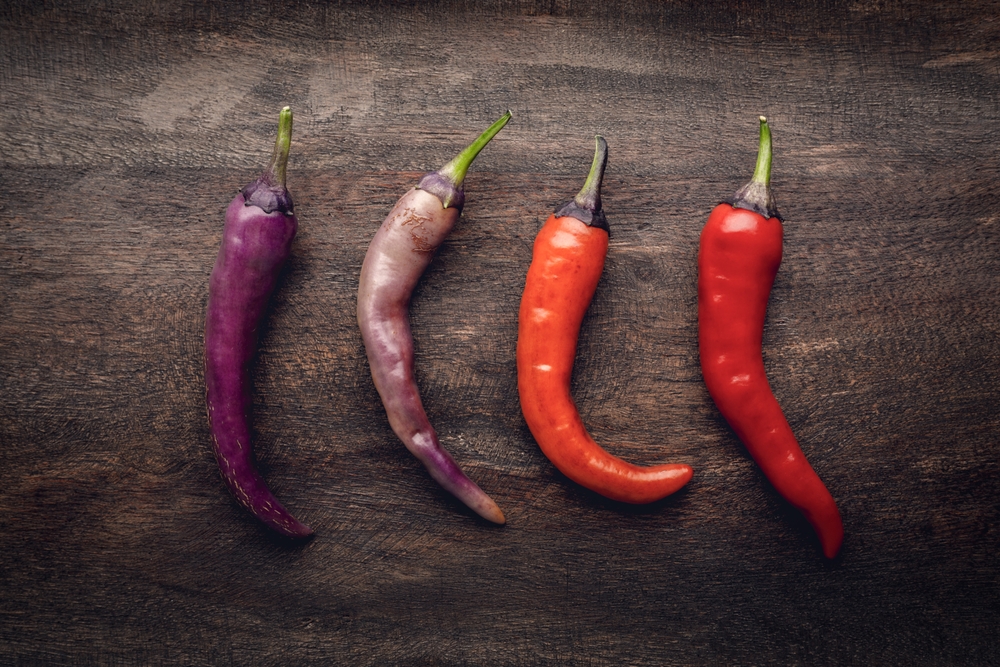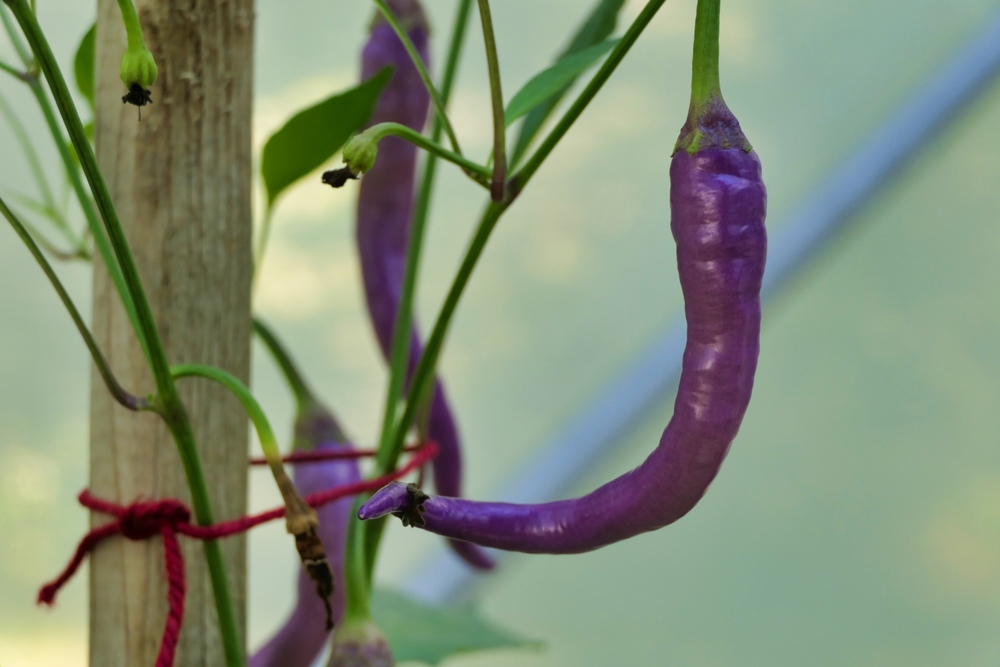Buena mulata is a rare heirloom pepper with a stunning deep purple color, sweet flavor, and intense heat level that make it stand out in the pepper world. The Pennsylvanian pepper is a close relative of cayenne peppers, making it excellent for spicing authentic salsa morada (purple salsa), fresh salads, sandwiches, and hot sauces.
What Are buena mulata Peppers?
Buena mulata is a purple heirloom pepper of the capsicum annuum species with an eye-catching appearance. It has a rich history dating back many generations and heat level similar to cayenne pepper.
Origins
Horace Pippin, an African-American folk artist, loved collecting and saving rare seeds. Based on his love for good food and art, he grew buena mulata and was awed by its attractive color and magical flavor.
In 1944, he gave buena mulata seeds from his Baltimore and Philly friends to H. Raph Weaver, a beekeeper.
It was not until the 1960s when the renowned food historian, William Woys Weaver discovered buena mulata and fish pepper seeds in his grandfather’s (H. Raph Weaver) freezer.
William re-introduced the pepper to the world, and people loved it for decorating their backyards and giving meals a punch of spice.
Taste
Buena mulata has a unique flavor profile. Young peppers have a fresh, vegetal taste with a touch of grassy flavors. As they get red and fully ripened, you’ll enjoy a deeply sweet, fruity, almost floral taste, plus hints of smokiness and lingering heat.
Color
Buena mulata peppers have unique color variations depending on its ripening stage. The pod starts with a pale green-yellow hue, which turns to a vibrant purple-violet when growing, then to a bright orange color, to brown, and finally to crimson red when fully ripe.
These color combinations and vibrant purple and white flowers make buena mulata peppers a worthy addition to your collection of ornamental plants.

Shape
Buena mulatas have a shape similar to cayennes. The pods are elongated and slender with tapered, curvy tips.
Texture
These cayenne-type chiles have a smooth, shiny texture. When dried, the pepper’s skin turns wrinkly and slightly bumpy.
Size
Unlike other cayenne varieties, buena mulatas are smaller in size. A mature pepper is 6-7 inches long with a diameter of 1/3 inch. The pepper plant gets up to 2-3 ft. tall.
How Hot Are buena mulatas?
Buena mulatas belong to the class of hot peppers. These chiles deliver manageable spiciness with a range of 30,000-50,000 SHUs on the Scoville scale. Compared to a jalapeno pepper (2,500-8,000 SHUs), the buena mulata is 6-12 times hotter.
Cayenne peppers have the exact heat level as buena mulata, while serrano chiles are 2- 3 times milder in spice. The mildest habanero pepper is two times spicier than the hottest buena mulata.
How To Use buena mulata Hot Peppers
Ornamental peppers typically aren’t suitable for culinary use. However, buena mulata is excellent for both purposes. Some love its deep purple hue in their dishes, while others treasure the intense flavor.
Let’s explore some ways to use this tasty, colorful pepper:
- In vegetable salads – Toss de-seeded, thinly sliced buena mulata pepper into your fresh vegetable salad for a sweet, spicy taste.
- For salsas – Use buena mulatas instead of serrano peppers when making authentic salsa morada.
- Eat raw – Buena mulata pepper is also best eaten raw for its nutrients and vitamins. Take caution, as the pepper has a reasonably high heat level.
- On sandwiches – Sprinkle the purple chiles on your sandwiches or make a spicy may spread.
- Great as pickled peppers – Due to the attractive hue and distinct flavor, pickling buena mulata pepper is an excellent option.
- Pepper jelly- Substitute jalapenos with buena mulata, then add homegrown basil, sugar, and apple cider vinegar to make a delicious hot pepper jelly.
- Serve with baked sweet potatoes –The sweet and floral flavor of the buena mulata pairs beautifully with sweet potatoes.
- Meaty and savory dishes – The peppers are excellent blended into a marinade with garlic and herbs for grilled meats, pork, or seafood.
- Hot purple sauce – Use the colorful chiles to add color and flavor to your homemade purple hot sauce.
Where To Buy buena mulata Peppers
Fresh buena mulata peppers are hard to find in supermarkets. To have a constant supply, buy hot pepper seeds from online vendors like Amazon and try your luck at growing them.
Can You Grow buena mulata Peppers?
With proper conditions, buena mulata peppers are productive and easy to grow. You don’t need a large space to grow them as they are excellent for containers and pots. Germination takes 7-10 days.

In addition to anticipating the harvest, it’s enjoyable watching the beautiful rainbow display as the peppers mature from green to purple to orange and later a deep red.
This purple pepper loves full sun, ample water, and rich, well-drained soils like other capsicum annum pepper varieties. However, the buena mulata pepper plant needs support since it can be overwhelmed during the fruiting stage.
Experts recommend using a soft material to tie plants to cages and stakes to prevent breakage.
Substitutes For buena mulata Peppers
Buena mulatas are rare peppers. If you can’t find any for your recipes, red cayenne pepper is an excellent substitute for fully-ripened mulatas. Cayenne packs the same heat as mulatas and has similar fruitiness.
Chile tabasco(30,000-50,000 shus) is another good option as it has the same heat level as buena mulata’s smoky taste. Though lower in spice, gochugaru pepper provides a sweet, smoky flavor like the buena mulata chile. Jalapeno makes a worthy substitute if you love the vegetal taste of a young, purple mulata.

